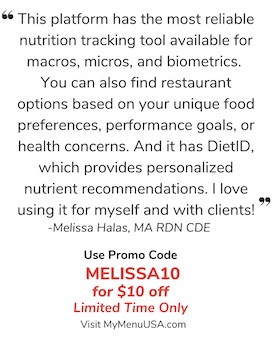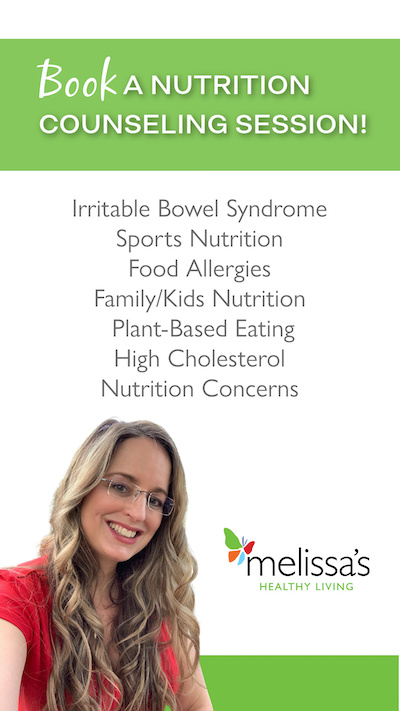
Here are all of the details about non-celiac gluten sensitivity from gluten-free experts.
Do you know what non-celiac gluten sensitivity is and how it differs from Celiac disease? For many people, a gluten-free diet is the key to feeling well. While some of these individuals have celiac disease, others do not fit the criteria for this diagnosis. We caught up with registered dietitians and gluten-free diet experts Dr. Anne Lee, RD, LD, and Jessica Lebovits, RD, CDN, CNSC from the Celiac Disease Center at Columbia University Medical Center to learn more about this often-misunderstood condition. We also asked Melissa Halas, MA, RDN, CDE about the clients she works with who benefit from a gluten-free diet.
What is non-celiac gluten sensitivity?
Non-celiac gluten sensitivity is currently defined as a condition in which individuals report an improvement of symptoms after eliminating gluten from their diet. (1) These symptoms may occur within the gastrointestinal tract, outside of the gastrointestinal tract (“extra-gastrointestinal”), or both. (1) This diagnosis is only given after both celiac disease and wheat allergy are ruled out. (1)
How is non-celiac gluten sensitivity different from celiac disease?
Although both celiac disease and non-celiac gluten sensitivity are treated with a gluten-free diet, they have different causes. Unlike celiac disease, the cause of symptoms after eating gluten is unknown in non-celiac gluten sensitivity.
Symptoms and Reactions of Non-Celiac Gluten Sensitivity
- After eating gluten-containing foods, non-celiac gluten sensitivity symptoms usually appear within hours and resemble those experienced by patients with celiac disease. (2)
- People with non-celiac gluten sensitivity might experience symptoms within the gastrointestinal tract, outside of the gastrointestinal tract, or both. (1)
- Common gastrointestinal symptoms include, but are not limited to, bloating, abdominal pain, and diarrhea. (1)
- Common extra-gastrointestinal symptoms include, but are not limited to brain fog, headaches, and fatigue. (1)
- Despite the lack of damage to the small intestine’s absorptive surface as would be seen with celiac disease, many patients show mild nutrient malabsorption resulting in low levels of ferritin and folic acid. (3)
There is also no consensus as to how strictly individuals with gluten sensitivity need to avoid gluten and whether all sources of gluten definitively need to be avoided. Each person’s sensitivity to gluten is different. Treatment should be individualized to meet each patient’s unique needs.
How would you diagnose this in practice?
Most of the literature uses double-blind, placebo-controlled crossover trials to determine who actually has a response to the reintroduction of gluten and who may be responding to something else in wheat or food. A few different approaches are commonly taken:
- In some respects, a diagnosis of non-celiac gluten sensitivity is a diagnosis by default as currently there are no definitive tests or diagnostic criteria for the condition.
- In practice, patients undergo a complete diagnostic workup with their gastroenterologist. Testing is done to determine whether patients have celiac disease or wheat allergy through lab work and an endoscopy if there is suspicion for celiac disease.
- If these diagnoses are ruled out, a diagnosis of non-celiac gluten sensitivity can be made by the gastroenterologist.
What if gluten isn’t actually causing the symptoms?
Several gastrointestinal conditions have overlapping symptoms. Although many people attribute their symptoms to gluten and may believe they have non-celiac gluten sensitivity, it is possible they have an alternative condition that may not have been explored yet. It is important to work with a trained gastroenterologist and dietitian to correctly diagnose your condition.
- Recently, it has become clear that other triggers within foods may be provoking symptoms, such as dietary fructans and amylase trypsin inhibitors (ATIs). (2)
- A diagnosis of irritable bowel syndrome should also be considered. If a diagnosis of irritable bowel syndrome is determined, then patients may be referred to a dietitian for guidance on a low FODMAP diet. A trial of a low FODMAP diet can be used to correctly identify the foods that trigger gastrointestinal symptoms. If patients tolerate all other high FODMAP foods besides gluten, a diagnosis of non-celiac gluten sensitivity is appropriate.
- Other conditions that may be mistakenly attributed to gluten intolerance include small intestinal bacterial overgrowth (SIBO), irritable bowel syndrome, and lactose or fructose intolerance.
- The main trigger of non-celiac gluten sensitivity within wheat has not yet been identified. The gluten-free diet is still the most effective therapeutic option at this time. (2)
Have you found that a gluten-free diet has been successful in treating any other conditions?
Anecdotally, patients sometimes report improvement with various restrictions to the diet, including gluten. However, they often have initiated this restriction without proper guidance from a dietitian ensuring that gluten was the only factor being manipulated. It is possible that when patients restrict gluten, they are also restricting other factors that may be responsible for the change in symptoms, such as excess fat, ultra-processed foods, excess sugar, or fructans. There is no high-level evidence to support the gluten-free diet for any other condition besides celiac disease and non-celiac gluten sensitivity.
While further evidence is still pending, Melissa Halas, MA, RDN, CDE has seen positive effects of a gluten-free diet for her patients with other conditions like fibromyalgia, migraines, and rheumatoid arthritis. Among the research that has been done with these patients, it is hopeful yet inconclusive whether the gluten-free diet is clinically effective in treating these conditions. (4, 5, 6)
What are the main challenges to compliance that you see in adults following a gluten-free diet?
The main challenges include:
- Widespread misinformation about a gluten-free diet, especially on the internet
- Lack of understanding or accommodations at certain restaurants
- Lack of motivation which may be driven by lack of symptoms or the patient’s lifestyle
- Lack of support or understanding from friends, family, peers, or coworkers
- Limited access to gluten-free foods
- Cost of gluten-free foods
- Lack of clear labeling on food
- Hidden sources of gluten in food
Specifically, for those with non-celiac gluten sensitivity, there may be further challenges beyond those that people with celiac disease experience. A lack of acceptance from much of the medical community creates barriers to clear diagnosis and may complicate the patient’s friends and family’s understanding of their dietary needs. For those who avoid gluten without a celiac disease diagnosis, patients might be wrongly labeled as simply “picky eaters” or that their symptoms are entirely in their head. Of course, this is not the case for those with non-celiac gluten sensitivity.
What are the specific challenges to children and teens with non-celiac gluten sensitivity?
While non-celiac gluten sensitivity appears to be less common in children and teens, the negative impact of a gluten-free diet is far reaching in a child’s life. Because of the varied symptoms and lack of clear diagnostic criteria, non-celiac gluten sensitivity can be missed in children.
- The symptoms more commonly seen in children tend to be neurological and may be attributed to the child’s behavior rather than an underlying physical cause. Symptoms can include brain fog, attention issues, headaches, and dizziness.
- Children with non-celiac gluten sensitivity can also experience joint and muscle pain, which may be dismissed as growing pains.
- Symptoms may have a substantial impact on school attendance and performance and the ability to socialize. Once diagnosed, the gluten-free diet adds another layer of complication. Many schools provide meals for children, but a safe gluten-free meal may not always be an option. This may also be true for summer camps, sports activities, and school functions and trips.
- There are also the social limitations of the diet. Children may feel isolated or may be bullied because they have different dietary needs. This might lead older children and teenagers to be less strict with their gluten-free diet from time to time in order to feel that they fit in better with their peers.
Getting Started with Gluten-Free Eating
If you believe that you or someone in your family has a non-celiac gluten sensitivity, talk to your doctor or registered dietitian to ensure a gluten-free diet is right for you and to rule out other diagnoses. Once you’re ready to get started with some tasty gluten-free eats, try buckwheat, or zucchini muffins.
References
- Leonard MM, Sapone A, Catassi C, et al. Celiac disease and nonceliac gluten sensitivity: a review. JAMA. 2017; 318(7): 647-656. Doi: 10.1001/jama.2017.9730
- Dieterich W, Zopf Y. Gluten and FODMAPS – sense of a restriction/when is a restriction necessary? Nutrients. 2019; 11(8): 1957. Doi: 10.3390/nu11081957
- Volta U, De Giorgio R, Caio G, Uhde M, Manfredini R, Alaedini A. Non-celiac wheat sensitivity: an immune-mediated condition with systemic manifestations. Gastroenterol Clin North Am. 2019; 48(1): 165-182. Doi: 10.1016/j.gtc.2018.09.012
- Isasi C, Colmenero I, Casco F, et al. Fibromyalgia and non-celiac gluten sensitivity: a description with remission of fibromyalgia. Rheumatol Int. 2014; 34: 1607-1612. Doi: 10.1007/s00296-014-2990-6
- Badsha. Role of diet in influencing rheumatoid arthritis activity. Open Rheumatol J. 2018; 12: 19-28. Doi: 10.2174/1874312901812010019
- El-Chammas K, Danner E. Gluten-free diet in nonceliac disease. Nutr Clin Pract. 2011; 26(3): 294-299. Doi: 10.1177/0884533611405538



